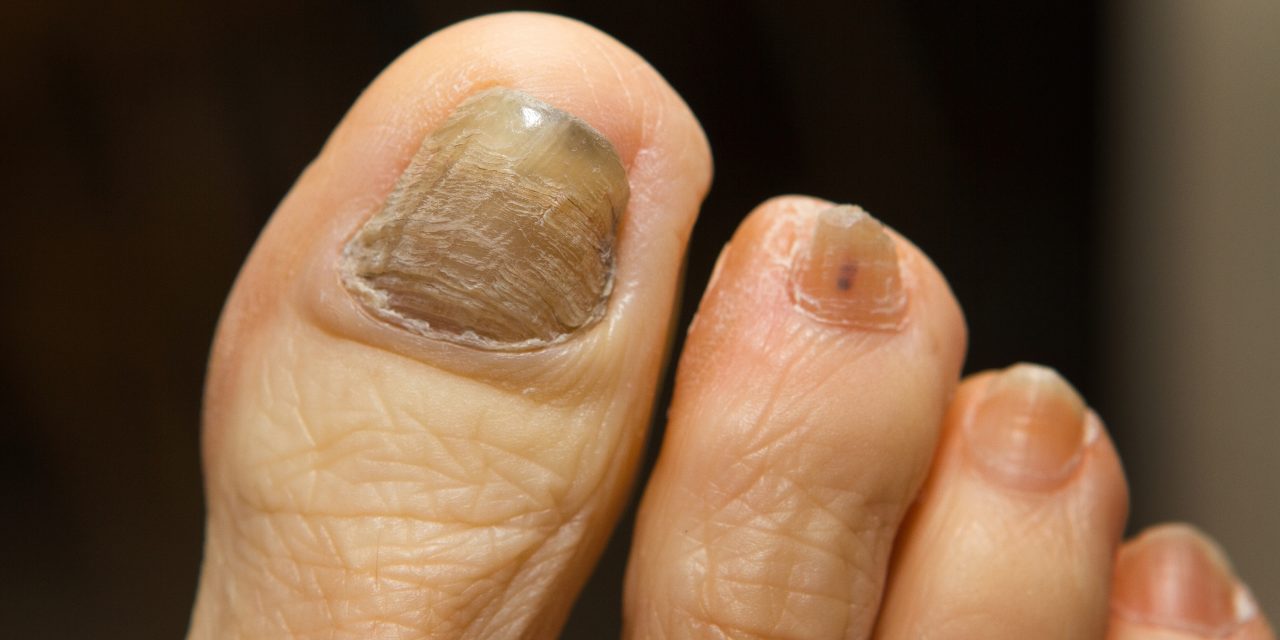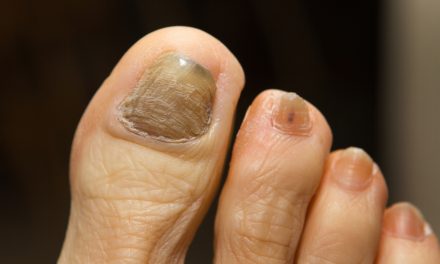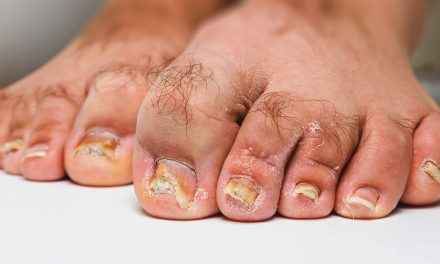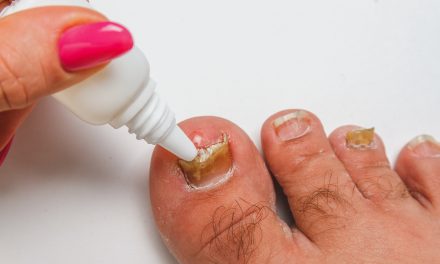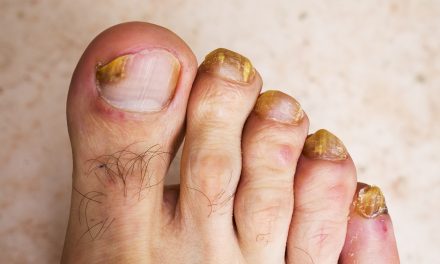Toenail fungal infections can be both annoying and persistent, affecting many people worldwide. These infections are known as onychomycosis and are caused primarily by dermatophytes, a type of fungus that thrives in warm, moist environments.
The most common cause of toenail fungal infections is extended exposure to damp conditions, making it imperative to keep feet dry and clean.

In addition to dermatophytes, other fungi like yeast and molds can also lead to nail infections. People with compromised immune systems, including those with diabetes or other conditions, are at higher risk.
Personal habits like walking barefoot in public showers or sharing nail care tools can further spread the infection.
Key Takeaways
- Common cause of toenail infections is exposure to damp conditions.
- Fungi like yeast and molds can also cause infections.
- Keeping feet dry and using clean personal items helps prevent infections.
Understanding Toenail Fungal Infections
Toenail fungal infections are common and often arise from fungi that invade the nail bed and plate. These infections can result from various types of fungi, including dermatophytes and Candida. Recognizing the types of fungi that can affect the nails is crucial for proper treatment.
What Is Onychomycosis?
Onychomycosis is the medical term for fungal infections of the nails. This condition affects the toenails more frequently than fingernails due to the environment within shoes, which is warm and moist. Such conditions promote fungal growth.
There are several forms of onychomycosis. Distal subungual onychomycosis is the most prevalent, where the infection begins at the end of the nail and works its way back. Proximal subungual onychomycosis starts near the cuticle, usually in people with a weakened immune system.
Proximal white superficial onychomycosis is rarer, affecting the nail surface directly. Diagnosing the specific type of onychomycosis is vital since the treatment can vary depending on the exact infection type and severity.
Common Types of Nail Fungi
Various fungi can lead to toenail infections. Dermatophytes are responsible for most cases of nail fungus, thriving in keratin, the nail’s primary protein. Trichophyton rubrum is a common dermatophyte causing skin and nail infections.
Candida is another type of fungus that can cause onychomycosis, especially in humid environments. This yeast infection often links to people exposing their hands or feet to moisture frequently.
Other fungi, like non-dermatophyte molds, rarely affect nails but can still be responsible for certain cases. Identifying the specific fungus helps in choosing effective treatment options to address the issue and restore nail health.
Causes and Risk Factors
Toenail fungal infections, also known as onychomycosis, can occur due to various reasons. Factors like a person’s lifestyle, health conditions, and environment contribute significantly. Understanding these causes can help in both preventing and treating these infections effectively.
Why Toenails Are Susceptible
Toenails often face more exposure to fungi due to outdoor activities and enclosed footwear. Because the feet are frequently in closed, dark, and humid environments, they become a breeding ground for fungi.
Additionally, slower growth in toenails compared to fingernails makes it harder for the body to naturally combat infections.
The pressurized environment inside shoes damages the nails, creating micro-tears that allow fungi to invade. Dermatophytes, a common type of fungus, thrive under these conditions and attack keratin, the protein in nails. This susceptibility increases with age, as nail growth slows down, making it a persistent issue.
Conditions That Promote Fungal Growth
Moist environments play a major role in fungal infections. Fungi need moisture to grow, and sweaty feet or damp socks provide that perfect setting. Wearing non-breathable shoes further enhances this moist condition, encouraging fungal activity.
Those with diabetes need to be extra careful. Diabetes can cause reduced blood supply to the feet, making it harder to fight off infections. A weakened immune system also heightens risk, as it reduces the body’s capacity to resist fungal growth.
Regular hygiene practices, like drying feet thoroughly, can decrease this risk significantly.
Other Contributing Factors
Athletic lifestyles increase the chances of toenail fungal infections. Frequent use of communal showers or swimming pools exposes individuals to various fungi that may spread to feet and nails. Long periods in wet environments add to the risk.
The condition of the immune system plays a pivotal role. When the immune system is compromised, whether due to illness or medication, the body has less ability to fend off fungal invasions.
Open-toed shoes that help keep feet dry, and regular foot checks, can help in reducing fungal infections.
Symptoms and Diagnosis
Toenail fungal infections often lead to noticeable changes in the nail’s appearance and structure. Early detection and proper diagnosis are crucial for effective treatment and preventing further complications.
Identifying Toenail Fungal Infections
Common signs of a toenail fungal infection include discoloration, where the nail may appear yellow, brown, or white. The nail might become thickened, which can make it difficult to trim and maintain.
Nail crumbling at the edges or severe brittleness may also occur. These symptoms can be more noticeable when wearing open-toed shoes.
Dermatology experts suggest that recognizing these early signs can help in starting treatment sooner. It’s important to monitor any changes in nail health and seek advice when symptoms arise.
When to See a Healthcare Provider
Individuals should consider seeing a healthcare provider if symptoms persist or worsen. If the nail becomes painful, it’s a sign that the infection might be advancing.
People with diabetes or a weakened immune system should be particularly vigilant, as infections can lead to serious complications.
Consulting with a dermatologist can provide clarity on whether symptoms are indeed due to a fungal infection or another nail condition. Early medical advice can prevent further issues.
Diagnostic Procedures
Diagnosing a toenail fungal infection often involves a physical examination by a healthcare provider. They might take a nail clipping or scraping for laboratory analysis to identify the specific fungus. This process helps ensure the correct treatment plan is prescribed.
In some cases, doctors use imaging tests if they suspect underlying issues. Accurate diagnosis is key in tailoring the treatment to the specific type of fungus and ensuring better outcomes for the patient.
Treatment Options
Toenail fungal infections can be addressed through several approaches, each with its own benefits. These methods range from easily accessible over-the-counter products to more advanced prescription medications and even specialized procedures like laser treatment.
Over-the-Counter Solutions
For many individuals, over-the-counter antifungal creams and nail solutions can be effective. Products containing ciclopirox, efinaconazole, and tavaborole are available and may provide relief for mild cases. These solutions are typically applied directly to the nail and surrounding skin.
Biotin supplements may also help, as they are believed to strengthen nails and possibly prevent further damage. Application consistency is key to achieving results, and improvements may be slow, typically taking several months to become noticeable.
Prescription Medications
When over-the-counter options are insufficient, prescription medications may be recommended. Terbinafine, itraconazole, and fluconazole are popular oral antifungal drugs that can target the infection from within the body. These medications often require regular blood tests to monitor any potential side effects, especially on the liver.
Topical prescription treatments like ciclopirox nail lacquer can also be prescribed. They usually need longer periods to work, and combining them with oral medications often increases effectiveness.
Laser and Surgical Procedures
Laser treatment offers a modern approach to nail fungus, using targeted light to destroy the fungus without harming the surrounding tissue. Though promising, this method may require several sessions and can be expensive, as it might not be covered by insurance.
For severe cases, surgical removal of the infected nail might be considered. This allows topical treatments to be more effective as they can reach the affected area directly. While invasive, surgery tends to be a last resort after other treatments fail.
Prevention Strategies
Preventing toenail fungal infections involves maintaining good foot hygiene and taking proactive steps. These strategies can help reduce the risk of infections, including athlete’s foot, by minimizing contact with moist environments and promoting healthy foot care habits.
Daily Foot Care Routines
Regular foot care is essential for preventing fungal infections. Keeping feet clean and dry helps avoid fungi that thrive in moist environments.
Washing feet daily with soap and water and thoroughly drying them, especially between the toes, is crucial.
Wearing breathable socks and shoes helps prevent moisture buildup. Rotating shoes and using antifungal powders can further reduce moisture.
Regular nail trimming in a straight line, avoiding curved edges, prevents nail damage which can lead to infections.
Essential oils such as tea tree oil may have antifungal properties and can be used as part of a topical routine. A few drops diluted in a carrier oil can be applied to clean, dry nails to provide protection against fungi.
Proactive Measures
Taking proactive measures can further safeguard against toenail fungal infections. Proper footwear in communal areas like locker rooms or pools can prevent contact with fungi. Using flip-flops or waterproof sandals provides an effective barrier.
Apple cider vinegar, known for its antifungal properties, can be used in foot soaks. Mixing equal parts of vinegar and water in a basin allows for regular 15-minute soaks, which can help maintain foot health.
If infections persist, consulting a healthcare provider for advice is vital. They can recommend effective treatments and ensure no underlying health conditions contribute to the problem. Regular check-ups are beneficial for ongoing prevention and management.
Complications Associated with Fungal Infections
Fungal infections in toenails can lead to more than just discolored or thickened nails. In severe cases, they can worsen and lead to other medical issues such as secondary infections. Understanding these complications helps in addressing and preventing them effectively.
When Fungal Infections Get Worse
If a fungal infection is left untreated, it can grow and cause serious nail damage. Nails may become so thick that wearing shoes becomes painful.
Nail bed ulceration is a potential outcome, especially in people with conditions like diabetic neuropathy, as seen in some diabetic patients.
Fungal infections might also mimic other conditions, such as psoriasis, making accurate diagnosis crucial. In severe cases, they can be mistaken for skin cancer, like melanoma. These misdiagnoses can lead to inappropriate treatment, emphasizing the need for correct diagnosis to prevent further complications.
Secondary Infections
Secondary infections can develop when a fungal infection breaks the skin barrier. This can allow bacteria to enter, leading to bacterial infections. These are not only painful but may require antibiotics to treat.
Untreated bacterial infections can spread, causing more severe health problems. In some situations, such infections can be serious enough to compromise the immune system. The presence of a fungal infection increases the likelihood of these complications, highlighting the importance of early and effective treatment to prevent further issues.
Myths and Misconceptions
Toenail fungal infections are often misunderstood, leading to various myths. These myths can prevent people from seeking effective treatment. Understanding the facts is important.
Separating Fact from Fiction
A common myth suggests that nail fungus only affects those with poor hygiene. While hygiene can play a role, fungal infections are caused by fungi that thrive in warm and moist environments. Places like locker rooms and swimming pools are common sources. This means even those with good hygiene can be affected.
Another misconception involves tea tree oil, believed to cure toenail fungus completely. While it has some antifungal properties, it may not be effective for everyone. Treatment often requires antifungal medications for complete healing.
Some believe that toenail discoloration automatically means fungal infection. Discoloration can result from trauma or nail polish use.
Likewise, some think nail fungus is related to conditions like jock itch or hair loss. These conditions are different. Jock itch affects skin, and hair loss has various causes. Toenail fungus primarily affects the nails’ keratin.
Being aware of these myths helps make informed decisions about prevention and treatment.
Frequently Asked Questions
Toenail fungal infections are common and can be quite persistent. Understanding how to treat them effectively and recognizing signs of improvement are key to managing this condition.
How can one effectively treat toenail fungus?
Treatment options include topical antifungal creams and oral medications prescribed by a doctor. In some cases, laser therapy may also be effective.
Keeping nails clean and dry can help support other treatments.
Are there immediate treatments that kill toenail fungus?
Most treatments require time to show results. Topical treatments or prescribed oral medications can help, but they often need several weeks or months to be effective.
It is important to follow the recommended treatment plan thoroughly.
Can toenail fungus lead to more serious health issues?
For most people, toenail fungus is a cosmetic issue. However, in individuals with weakened immune systems or diabetes, it can lead to more serious complications if not treated properly.
It is essential to seek medical advice if any concerning symptoms arise.
What are the visible signs that indicate toenail fungus is healing?
Signs of healing include a clearer appearance of the nail and reduction of discoloration or thickness. Healthy nail growth starting from the base may also be observed.
Progress may be slow, so patience is important during treatment.
What are the different types of toenail fungal infections?
Different types include distal subungual onychomycosis, often caused by dermatophytes, and white superficial onychomycosis, which affects the surface of the nail.
Candida infections can also affect toenails, especially in those with compromised immune systems.
Could a nutritional deficiency be responsible for nail fungus?
While nutritional deficiencies alone don’t typically cause toenail fungus, they can weaken the body’s ability to fight infections.
A balanced diet supporting immune health may help prevent infections but is not a direct treatment for toenail fungus.

